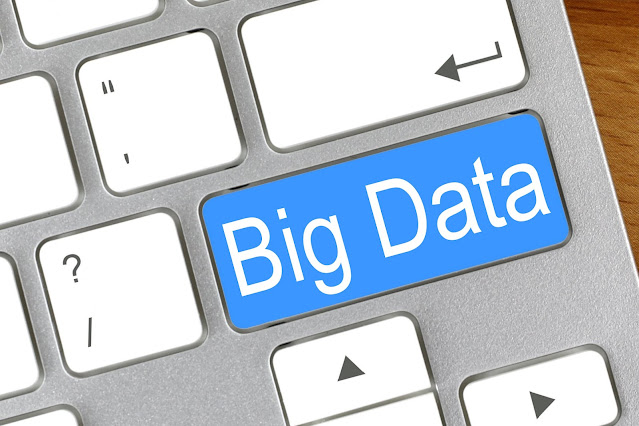The integration of technology and data-driven solutions has revolutionized various industries, including modern farming. Referred to as AgTech, the fusion of agriculture and technology has brought about more efficient, sustainable, and productive farming practices. Central to this transformation is the concept of "Big Data," which involves collecting, analyzing, and applying vast amounts of information. In this article, we will explore the significant impact of Big Data on modern farming and examine how data-driven insights are reshaping the agricultural landscape.
Table of Contents
- Introduction
- Enhanced Crop Management through Data Analytics
- Precision Agriculture: Optimizing Resource Allocation
- Real-time Monitoring and Predictive Analytics
- Improving Livestock Management with Data-Driven Insights
- Supply Chain Optimization and Demand Forecasting
- Climate Resilience and Risk Mitigation
- Empowering Small-Scale Farmers with Data Access
- Challenges and Considerations in Adopting Big Data
- The Future of Farming: Integrating AI and Big Data
1. Introduction
Traditional farming methods that relied solely on intuition and experience are being replaced by a new era of farming. The introduction of Big Data has empowered farmers to utilize information to make informed decisions, improve processes, and increase crop yields.
2. Enhanced Crop Management through Data Analytics
Modern farming relies on data analytics to enhance productivity. By leveraging sensors and IoT devices, farmers gather real-time information about soil health, nutrient levels, and crop growth patterns. With this data at their fingertips, they can make informed decisions about irrigation, fertilization, and pest control strategies, ensuring optimal yields and resource management.
3. Precision Agriculture: Optimizing Resource Allocation
Precision agriculture utilizes Big Data to optimize the allocation of resources like water, seeds, and pesticides. By analyzing data on soil composition, moisture levels, and weather forecasts, farmers can apply inputs precisely at the right time and place, minimizing waste and maximizing efficiency.
4. Real-time Monitoring and Predictive Analytics
Gone are the days of guesswork in modern farming. With real-time monitoring and predictive analytics, farmers now have the ability to identify potential issues before they become problematic. For example, by using data collected from sensors, farmers can accurately predict disease outbreaks or pest infestations, empowering them to take proactive measures in safeguarding their crops.
5. Improving Livestock Management with Data-Driven Insights
Big Data isn't just for crops; it also benefits livestock management. By monitoring animal behavior, health metrics, and feeding patterns, farmers can ensure the well-being of their animals and make informed decisions to improve breeding and production processes.
6. Supply Chain Optimization and Demand Forecasting
By integrating data-driven technologies, the agricultural supply chain can achieve improved coordination. This means that farmers, distributors, and retailers can have access to real-time information about crop availability, demand patterns, and market fluctuations. As a result, supply chain management becomes more efficient and food waste is reduced.
7. Climate Resilience and Risk Mitigation
Climate change presents significant obstacles for agriculture. However, Big Data offers a valuable solution by providing farmers with insights into shifting climate patterns and extreme weather events. Armed with this information, farmers can make informed decisions about adjusting planting schedules, choosing resilient crop varieties, and implementing strategies to minimize risks associated with climate change.
8. Empowering Small-Scale Farmers with Data Access
Access to valuable agricultural insights is no longer limited to large-scale farmers, thanks to the democratization of Big Data. Small-scale farmers, who may not have the resources for traditional data collection methods, can now benefit from mobile apps and cloud-based platforms that provide affordable access to data-driven recommendations. This empowerment allows farmers to enhance their practices and ultimately improve their livelihoods.
9. Challenges and Considerations in Adopting Big Data
The potential benefits of Big Data in farming are substantial; however, certain challenges must be overcome. Issues such as data privacy, limited connectivity in remote areas, and the requirement for technical skills may impede its widespread adoption. It is pivotal to address these obstacles to ensure equal access to the advantages offered by data-driven agriculture.
10. The Future of Farming: Integrating AI and Big Data
The future of modern farming hinges on seamlessly integrating artificial intelligence (AI) and Big Data. By leveraging AI-powered algorithms, complex datasets can be analyzed to extract valuable insights. This enables farmers to make proactive decisions and further optimize their operations.
The integration of Big Data into agriculture has revolutionized the traditional labor-intensive farming practices, transforming it into a modern industry driven by data. This union between technology and agriculture is opening doors to enhanced food production, minimized environmental impact, and improved livelihoods for farmers all around the globe.
In summary, the impact of Big Data on modern farming is extensive and revolutionary. By utilizing data-driven insights, farmers can overcome obstacles, enhance productivity, and help build a more sustainable and resilient agricultural future. As technology progresses, the combination of Big Data and agriculture holds even greater potential for innovation that will influence how we produce and consume food for future generations.










0 Comments